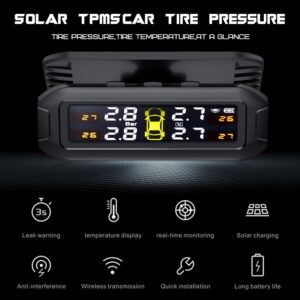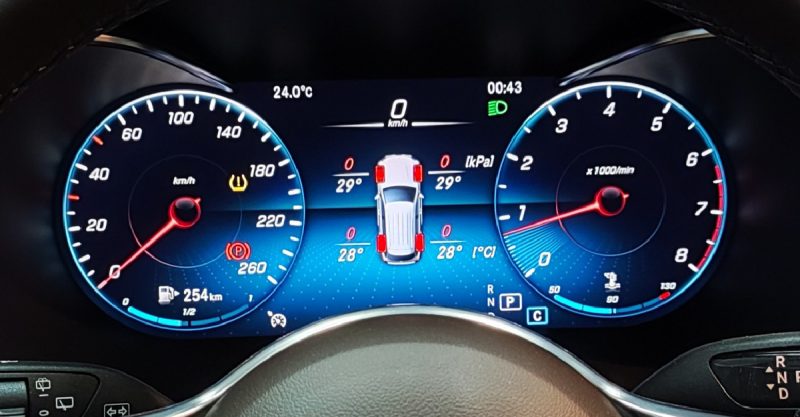Blog
How to Integrate TPMS with Your Car’s Infotainment System
How to Integrate TPMS with Your Car’s Infotainment System
Tire Pressure Monitoring Systems (TPMS) have become a crucial component of modern vehicles, providing drivers with real-time data on tire health, helping ensure safety, fuel efficiency, and long tire life. As car technology continues to evolve, integrating TPMS with your car’s infotainment system is becoming increasingly popular. This integration allows for more convenient monitoring and management of your vehicle’s tire pressure directly from the dashboard, alongside other key information such as navigation, media, and vehicle diagnostics.
In this guide, we’ll walk you through the process of integrating TPMS with your car’s infotainment system, the benefits of such integration, and some tips for maintaining the system.
What Is TPMS and How Does It Work?
Before diving into the integration process, it’s essential to understand what TPMS is and how it works. TPMS is a system that continuously monitors the air pressure inside your tires and alerts the driver if the pressure falls below a predetermined threshold, which can lead to unsafe driving conditions.
There are two types of TPMS:
- Direct TPMS: Measures tire pressure using sensors inside each tire. The data is sent to the vehicle’s onboard computer, which processes and displays the information.
- Indirect TPMS: Uses the vehicle’s ABS (Anti-lock Braking System) sensors to estimate tire pressure by monitoring the rotational speed of each tire. It’s less accurate than direct TPMS but still helps identify significant pressure changes.
Integrating TPMS with the infotainment system allows for a direct, real-time view of your tire’s health on the car’s display, typically alongside other vehicle data such as fuel efficiency and engine diagnostics.
How to Integrate TPMS with Your Infotainment System
Integrating TPMS with your infotainment system can be a straightforward process, but it will depend on your vehicle’s make, model, and year, as well as the compatibility of your TPMS system. Here’s how to go about it:
1. Check for Existing Integration Capabilities
Most modern cars with direct TPMS systems already display tire pressure information in the vehicle’s infotainment system, often under the “Vehicle Settings” or “Tire Monitoring” sections. Check your vehicle’s manual or settings menu to see if this feature is already available.
- Infotainment System Compatibility: Ensure your infotainment system is up-to-date. Older systems may not have the necessary features to display TPMS data, but most newer systems in vehicles from 2015 and onward often include TPMS integration as a standard or optional feature.
- Software Update: If your infotainment system is compatible with TPMS but not displaying tire information, check if there’s a software update available. Manufacturers periodically release updates that can improve system functionality and add new features.
2. Install TPMS Sensors Compatible with Infotainment Systems
If your vehicle doesn’t yet support TPMS integration or if you’re using an aftermarket TPMS system, you’ll need to ensure that the sensors are compatible with your infotainment system. Some vehicles require sensors from the manufacturer, while others may allow aftermarket systems with additional setup.
- OEM vs. Aftermarket Sensors: Original Equipment Manufacturer (OEM) sensors are usually preferred as they integrate seamlessly with the car’s onboard systems. Aftermarket sensors might require additional adapters or third-party devices to connect to your infotainment system.
- Wireless TPMS Systems: Some wireless TPMS solutions can be integrated with your infotainment system. These systems use Bluetooth or Wi-Fi to transmit tire pressure data directly to the infotainment display, eliminating the need for hardwired connections.
3. Pairing and Calibration
Once you’ve confirmed that your TPMS sensors are compatible with your infotainment system, you’ll need to pair them and calibrate the system. This may involve the following steps:
- Pairing TPMS with the Infotainment System: Depending on the make and model of your car, you might need to pair the TPMS sensors to your infotainment system through Bluetooth, a direct connection, or via the car’s OBD-II (On-Board Diagnostics) port. Some vehicles may require a TPMS scanning tool for this step.
- Sensor Calibration: After pairing, calibrate the sensors to ensure the data is correctly displayed on the infotainment screen. This step might include setting the recommended tire pressures, adjusting for different tire sizes (if necessary), and ensuring that all four tires are properly monitored.
4. Customize Alerts and Settings
Once your TPMS is integrated, most infotainment systems will allow you to customize how you receive alerts for low tire pressure or other tire-related issues. Common customization options include:
- Alert Thresholds: Set the pressure range at which you want to receive alerts. This allows you to get notified if your tire pressure is too high or low.
- Display Preferences: Customize how and where the TPMS information is displayed on your infotainment screen. You might want it to appear on the home screen or as part of a larger vehicle health dashboard.
- Sound Notifications: Enable or disable sound alerts when tire pressure reaches critical levels.
5. Test the Integration
After everything is set up, conduct a quick test to ensure the TPMS data is properly integrated and that the system is functioning as expected. You can do this by either driving the car for a short distance or checking the system for tire pressure readings from the infotainment screen.
If you notice any discrepancies in tire pressure data, it may be necessary to recalibrate the system or check the sensors for damage.

Benefits of TPMS Integration with Infotainment Systems
Integrating your TPMS with your car’s infotainment system offers numerous advantages that enhance safety, convenience, and vehicle performance:
1. Real-Time Monitoring
By integrating TPMS into your infotainment system, you can view real-time tire pressure data for all four tires at a glance. This is more convenient than having to manually check tire pressures or rely on individual sensor displays, as everything is consolidated on one screen.
2. Improved Safety
Having immediate access to tire pressure data allows you to quickly identify issues before they escalate. Underinflated tires can lead to blowouts, poor handling, and reduced braking effectiveness, so having the information readily available can help you maintain optimal tire pressure for safer driving.
3. Enhanced Fuel Efficiency
Properly inflated tires play a crucial role in optimizing fuel efficiency. By integrating TPMS data into your infotainment system, you’re more likely to spot underinflation early and keep your tires in the optimal pressure range, which can improve your fuel economy and save you money at the pump.
4. Better Tire Maintenance
Regular monitoring of your tires allows for better maintenance practices, such as knowing when to rotate your tires, replace them, or address any damage. Integrating TPMS data into your infotainment system makes it easier to manage tire care as part of your overall vehicle health monitoring routine.
5. Increased Convenience
Instead of checking tire pressure manually, you can simply glance at your infotainment screen to see if there are any issues with your tires. This saves time and reduces the chances of overlooking an issue.
Conclusion: Future-Proofing Your Vehicle with TPMS Integration
As automotive technology continues to advance, integrating TPMS with your car’s infotainment system is becoming increasingly important for ensuring both vehicle safety and convenience. With real-time tire pressure data, drivers can make more informed decisions, improve fuel efficiency, and enhance overall driving safety. By following the steps above, you can successfully integrate your TPMS with your infotainment system and enjoy the benefits of enhanced monitoring and vehicle care. Whether you’re driving an older model with aftermarket sensors or a new vehicle with built-in TPMS, this integration is a step toward future-proofing your car’s performance.



